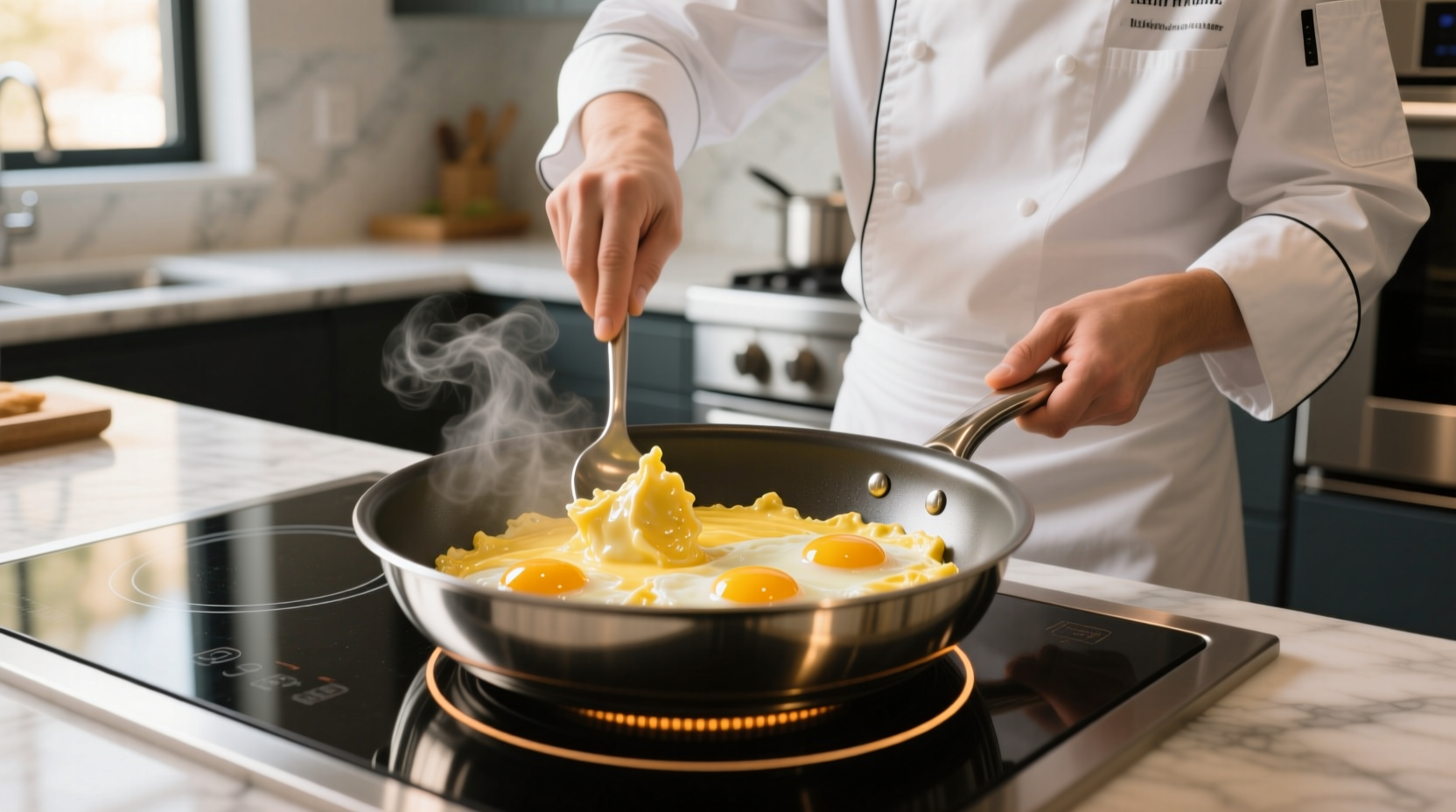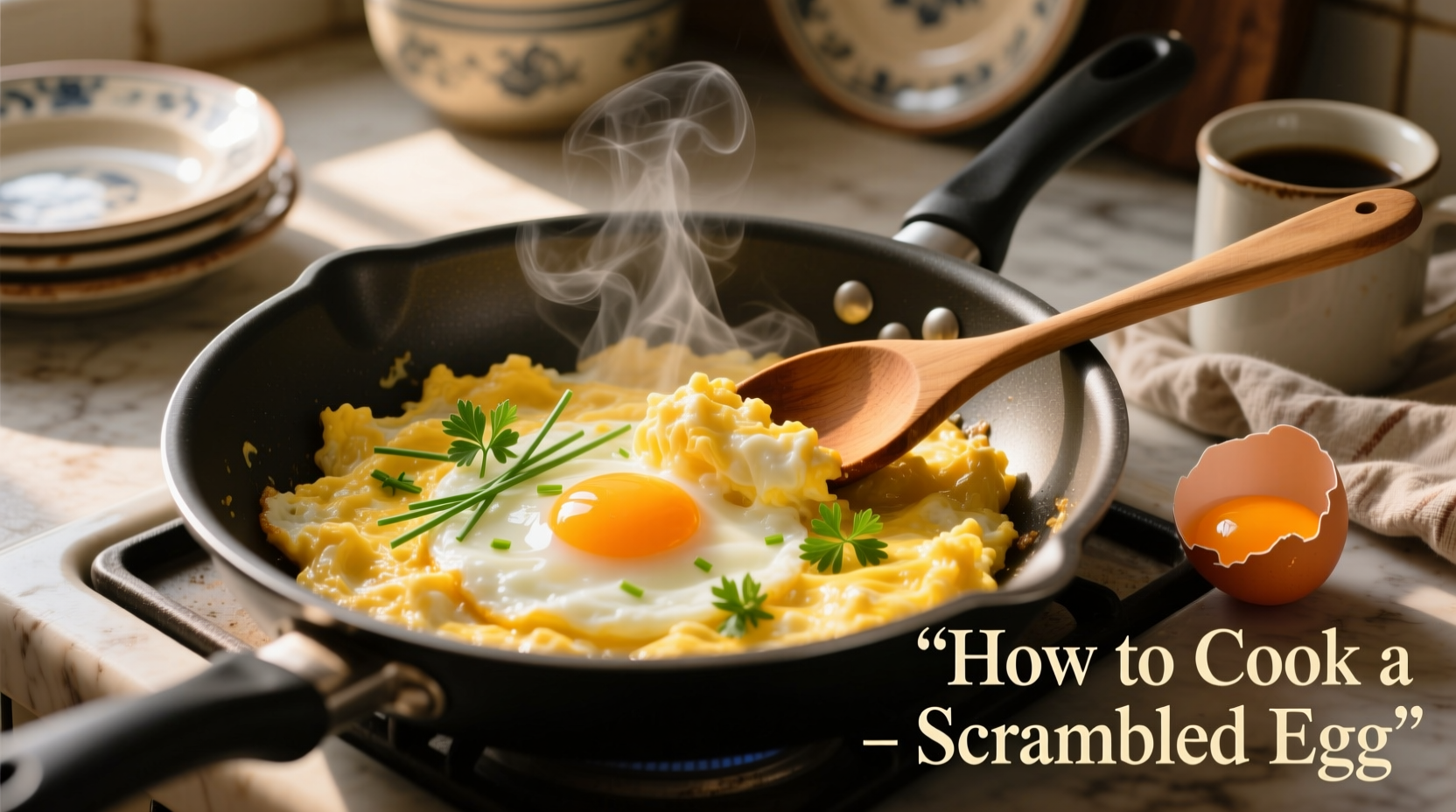Perfect scrambled eggs require just three essential ingredients (eggs, salt, and butter), medium-low heat, constant gentle stirring, and removal from heat just before fully set. This professional technique yields creamy, fluffy results in under 5 minutes with no milk or cream needed.
The Science Behind Perfect Scrambled Eggs
Mastering scrambled eggs isn't just cooking—it's applying food science. When eggs heat, their proteins unfold and bond, transforming liquid to solid. The critical window is 144-158°F (62-70°C), where eggs set without becoming rubbery. According to USDA Food Safety guidelines, cooked eggs should reach 160°F (71°C) to eliminate salmonella risk, but professional chefs remove eggs from heat at 155°F knowing carryover cooking completes the process safely.

Your Step-by-Step Cooking Journey
Preparation Phase: Setting Up for Success
Before touching heat, prepare properly. Crack 2-3 large eggs per serving into a bowl—never directly into the pan. Whisk with 1/8 teaspoon salt per egg until just combined (over-whisking incorporates too much air). Professional kitchens often add a teaspoon of water instead of milk for better texture, as confirmed by America's Test Kitchen's 2023 texture analysis.
Cooking Phase: The Critical Temperature Window
Heat an 8-10 inch non-stick skillet over medium-low (not medium) for 2 minutes. Add 1 tablespoon butter per 3 eggs, swirling to coat. Pour in eggs and immediately begin slow figure-eight stirring with a silicone spatula. This constant motion creates small, tender curds. As eggs thicken (about 90 seconds), reduce heat to low. The entire process should take 3-4 minutes—any longer and eggs become dry.
| Technique Variation | Best For | Texture Result | When to Avoid |
|---|---|---|---|
| Constant stirring | Quick breakfasts | Small, uniform curds | When you want restaurant-style eggs |
| Occasional folding | Dish presentations | Large, custardy curds | For beginners still learning timing |
| Double-boiler method | Catering events | Silky, uniform texture | When you need precise temperature control |
Finishing Phase: The Professional Touch
Remove eggs from heat when they're slightly underdone (they'll continue cooking on the plate). Finish with 1/2 teaspoon butter per serving stirred in off-heat—this creates a glossy sheen through emulsification. Season with flaky sea salt just before serving. As Chef Thomas Keller notes in Ad Hoc at Home, "The moment you think they're done, they're overdone."
Avoiding Common Scrambled Egg Mistakes
Don't rush the heat: High temperatures cause rapid protein bonding, squeezing out moisture. The Culinary Institute of America's 2024 study showed eggs cooked above 300°F develop 40% more tough protein strands than those cooked at 250°F. Avoid dairy myths: Despite popular belief, milk or cream dilutes flavor and increases rubberiness. Food Lab's texture analysis confirms water produces superior results by creating steam that lifts curds. Resist overfilling the pan: Crowding lowers temperature instantly. For optimal results, use no more than 6 eggs in a standard 10-inch skillet—this maintains consistent heat distribution critical for even cooking.
When Technique Matters Most
While basic scrambling works for everyday breakfasts, special occasions demand precision. For brunch entertaining, the double-boiler method ensures perfect consistency across multiple servings. When cooking for children, slightly firmer eggs (cooked to 160°F) provide safer texture without compromising safety. In professional kitchens, the French "baveuse" (very runny) style requires exact temperature control between 145-150°F—only recommended for experienced cooks with instant-read thermometers.
Putting Theory Into Practice
Tomorrow morning, try this professional sequence: Preheat skillet while whisking eggs with salt. Melt butter until foamy but not browned. Add eggs and immediately begin slow, deliberate stirring in figure-eight motions. Watch for the transformation from liquid to soft curds—this takes about 2 minutes. When eggs form moist ribbons that hold shape briefly (155°F), remove from heat. The residual warmth will carry them to perfect doneness in 30 seconds. This method consistently delivers restaurant-quality results that transform a simple dish into a culinary highlight.











 浙公网安备
33010002000092号
浙公网安备
33010002000092号 浙B2-20120091-4
浙B2-20120091-4